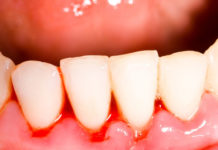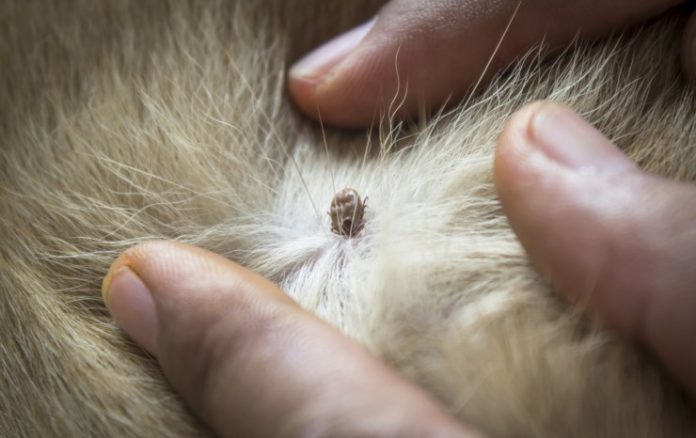This will happen to most animal lovers at some point in their lives: their pet will come back from a long walk in grassy fields having picked up an unwanted passenger – a tick. Ticks are part of a family of ectoparasites (external parasites) that live off mammalian blood, lock onto a dog’s, cat’s or even a person’s body, and feed until they are full, before breaking free from the skin and dropping to the ground.
Ticks are rather unpleasant, both in appearance and behaviour, and if you find one on your dog or cat, the temptation to immediately try to scratch or eliminate it can be hard to ignore. But unless you remove it carefully, you may leave part of the tick under the skin, which can lead to a variety of infections and potential complications.
During the summer months, most veterinarians will receive several visits per week from anxious pet owners who want to have a tick removed from their pets, which any veterinarian can do effectively in a few moments. But identifying and removing ticks at home shouldn’t be difficult if you follow a few simple tips to make sure you have it right the first time.
Identifying ticks
The first step to finding ticks on your pet and therefore removing them is knowing what they look like! Ticks come in a variety of sizes depending on their age and frequency of feeding, from the size of a spindle head to the size of a nail. They are oval or rounded and come in a range of colours, from light cream to dark grey, and everything in between. Generally speaking, a tick on your pet’s skin will look like a small rounded rock, because once a tick has attached itself to your pet, you will not be able to see their legs or the probe they use to pierce the skin.
Find ticks on your pet
Ticks can lock onto any exposed skin area on your pet, but they usually opt for the less hairy areas where there is a good blood supply just below the surface. Particularly favourable areas for ticks include the face and neck, the lower abdomen and the inside of the legs. Whenever you return from a walk with your dog or if your pet has walked in long grass (especially in damp environments such as woods or swamps), it is wise to take a quick look for the potential presence of ticks.
How NOT to remove a tick
Before continuing to explain the best ways to remove a tick from your pet’s skin, first of all, here are some ways not to remove a tick, despite what you may have heard or done in the past!
- Do not simply brush, scratch or pull the tick out of the skin. This can cause the tick probe to rupture below the surface of the skin and lead to a range of infections and potential problems;
- Don’t leave the tick there without doing anything for your pet to take care of itself;
- Do not remove the tick with bare hands or nails – ticks can emit diseases and infections such as Lyme disease, to which you and your pet may be vulnerable;
- Do not try to burn the tick;
- Do not spray the tick with insecticide or toxin;
- Do not use alcohol to remove a tick and do not try to smother it using a coat of Vaseline or soap.
Appropriate means to remove a tick
There are several appropriate options to safely and effectively remove a tick from your pet. First, before you begin, make sure you have thought about how you will dispose of the tick after you remove it. Ticks are parasites that can spread disease and should not just be thrown out or left alive. Have a suitable small jar or other small sealed containers in which you can place the tick after removal for safe disposal.
- By far the easiest, safest and most effective way to remove a tick from your pet is with a tool called a “twister”. These are small plastic cups with a claw-shaped head that clings between the tick’s body and your pet, giving you the lever effect to safely and effectively twist the tick out of your pet’s skin in one piece. If you have ever taken your pet to the vet to have a tick removed, this is almost certainly the tool your vet used. Most veterinarians sell this tool at their veterinarian clinic, or you can order one from several online retailers.
- You can also use a pair of needle nose pliers to remove the tick. Grasp the tick as close to your pet’s skin as possible, without grasping the tick’s body or squeezing it too tightly, as this can kill the tick, leaving the front part of the head buried under the skin releasing toxins. Then, gently and with constant pressure, twist and lift the tick from the skin. Do not apply too much force because, as mentioned, you do not want the tick head to break under the skin.
Follow-up
Whichever method you use to remove the tick, it is essential to make sure you remove the entire tick and not drop the tick head and keep it under the skin. If this happens by accident, take your dog to the vet so they can examine him and possibly prescribe antibiotics.
Once you have removed the tick, give the affected area of your pet’s skin a thorough wash and wipe with a topical antiseptic. Keep an eye on the affected area for a few days afterwards to make sure it does not become infected or inflamed.
Finally, while it is relatively rare, ticks can transmit Lyme disease to you or your pet once they have clung to the skin. Be aware of the potential symptoms of Lyme disease, which may include loss of appetite, weakness, general lethargy and depression. If you have any problems, contact your veterinarian immediately.
Source: pets4homes.co.uk


![[Photos] Why WD-40 Is Magic In Your Garden?](https://lifetonik.com/wp-content/uploads/sites/7/2019/08/WD40-Prices-Highres_Page_8_Image_0008-218x150.jpg)





![[Photos] Take A Look Of The Obama’s New Home Before It’s Banned](https://lifetonik.com/wp-content/uploads/sites/7/2019/07/Obama1-218x150.jpg)

![[Slideshow] Celebrity Homes: 21 Of The Most Luxurious](https://lifetonik.com/wp-content/uploads/sites/7/2019/07/Taylor-Swift-218x150.jpg)
![[Slideshow] More Parents Are Now Gluing Pennies to the Bottom of their Kid’s Shoes](https://lifetonik.com/wp-content/uploads/sites/7/2019/07/Keep-Them-Entertained-218x150.jpeg)
![[Photos] 20 Fashion Mistakes That Too Many Women Make!](https://lifetonik.com/wp-content/uploads/sites/7/2019/07/5-style-mistakes-that-make-you-look-frumpy-featured-218x150.jpg)



















![[Gallery] 25 Discounts For Seniors To Which You Are Entitled Without Knowing It](https://lifetonik.com/wp-content/uploads/sites/7/2019/08/EAZxECUXUAAvNZR-218x150.jpg)
![[Slideshow] Here’s the salary of every governor in the United States](https://lifetonik.com/wp-content/uploads/sites/7/2019/08/Charlie-Baker-218x150.jpg)
![[Photos] No One Will Want To Buy This House After Seeing These Pictures](https://lifetonik.com/wp-content/uploads/sites/7/2019/08/terrible-real-estate-photos-2-5c35e727c9f95__700-218x150.jpg)




